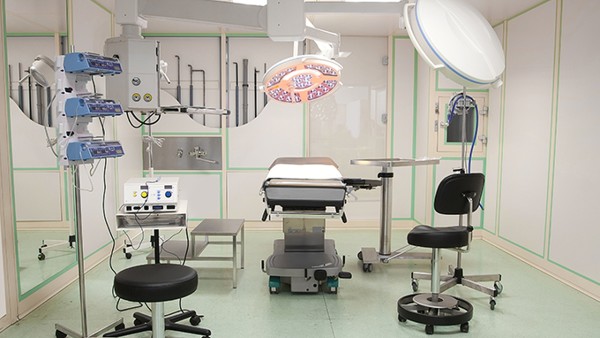Introduction to the Situation Within Two Months After Cesarean Section

Cesarean section (C-section) is a surgical procedure to deliver a baby through an incision in the abdomen and uterus. It is a major surgery that can have a significant impact on a woman's physical and emotional health.
In the weeks and months following a C-section, it is important for women to take care of themselves and follow their doctor's instructions. This will help them to recover from surgery and prevent complications.
Physical Recovery
After a C-section, women will experience some pain and discomfort. This is normal and should gradually improve over time. In the meantime, women can take over-the-counter pain relievers, such as ibuprofen or acetaminophen.
Women should also avoid strenuous activity for the first few weeks after surgery. This means no lifting heavy objects or doing any exercises that could put strain on the incision.
The incision will take several weeks to heal. During this time, it is important to keep it clean and dry. Women should also avoid wearing tight clothing that could rub against the incision.
Emotional Recovery
A C-section can be a traumatic experience for some women. They may feel sad, anxious, or even depressed after surgery. This is normal and should gradually improve over time.
However, if these feelings persist or worsen, women should talk to their doctor. They may need to be referred to a mental health professional for help.
Common Complications
There are a number of complications that can occur after a C-section. These include:
Infection
Hemorrhage
Blood clots
Organ damage
Anesthesia complications
These complications are rare, but they can be serious. If women experience any of the following symptoms, they should seek medical attention immediately:
Fever
Chills
Redness, swelling, or drainage from the incision
Heavy bleeding
Chest pain
Shortness of breath
Dizziness
Confusion
Recovery Timeline
The following is a general timeline for recovery after a C-section:
Week 1: Women will experience some pain and discomfort. They should rest and avoid strenuous activity.
Week 2-4: The pain and discomfort will gradually improve. Women can start to do light activities, such as walking and light housework.
Week 6-8: Women should be able to resume most of their normal activities. However, they should still avoid heavy lifting and strenuous exercise.
Month 2: The incision should be fully healed. Women can resume all of their normal activities.
Tips for Recovery
There are a number of things that women can do to help their recovery after a C-section. These include:
Follow your doctor's instructions. This will help you to prevent complications and ensure a safe recovery.
Rest. Get as much rest as possible in the weeks following surgery. This will help your body to heal.
Eat a healthy diet. Eating plenty of fruits, vegetables, and whole grains will help to boost your immune system and promote healing.
Exercise regularly. Once your doctor has cleared you to exercise, start slowly and gradually increase the intensity and duration of your workouts. Exercise will help to strengthen your muscles and improve your overall health.
Take care of your mental health. If you are feeling sad, anxious, or depressed after surgery, talk to your doctor or a mental health professional.
Get support from your family and friends. Having a support system can make a big difference in your recovery. Ask your loved ones for help with childcare, housework, and other tasks.
When to Call the Doctor
If you experience any of the following symptoms after a C-section, call your doctor immediately:
Fever
Chills
Redness, swelling, or drainage from the incision
Heavy bleeding
Chest pain
Shortness of breath
Dizziness
Confusion
Cesarean Section and Breastfeeding
Women who have had a C-section can breastfeed their babies. However, it may take a few days or even weeks for your milk to come in. In the meantime, you can give your baby formula or donor milk.
Once your milk has come in, you can breastfeed your baby as often as he or she wants. Breastfeeding can help to bond with your baby and provide him or her with the best possible nutrition.
Cesarean Section and Future Pregnancies
If you have had a C-section, you can have a vaginal birth in future pregnancies. However, your doctor will need to assess your individual risk factors to determine if a vaginal birth is safe for you.
If you are planning to have another baby, talk to your doctor about your options.
The above is all the content that the editor wants to share with you. I sincerely hope that these contents can bring some help to your life and health, and I also wish that your life will be happier and happier.
Topic: #situation #within #the









